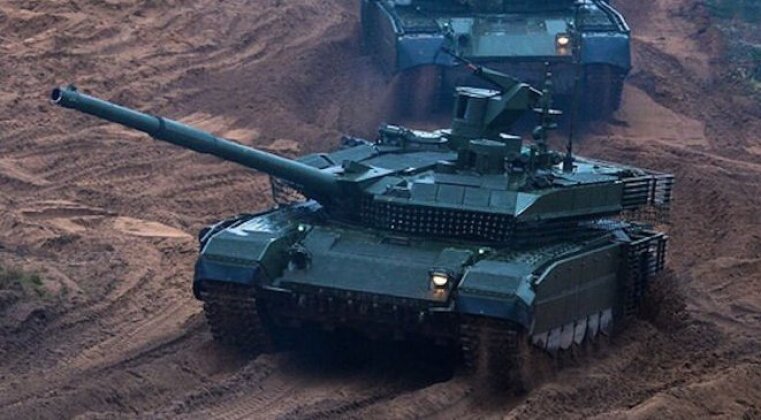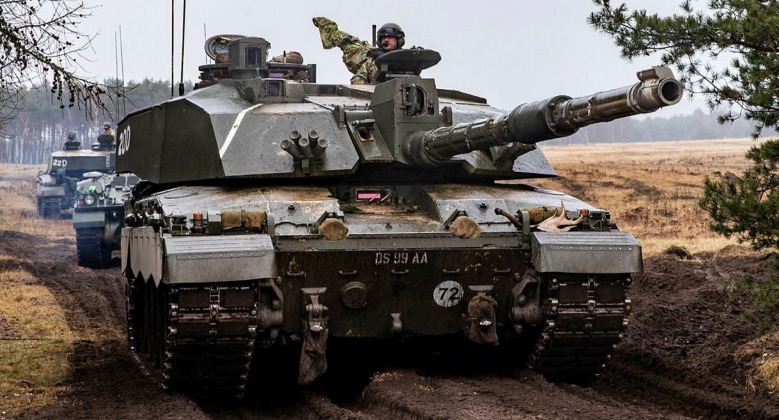As the first Western-built tank class pledged in an aid package to Ukraine, the British Challenger 2 is expected to see the first units delivered by mid-April as Ukrainian personnel continue to train to operate and maintain the class in United Kingdom. Deliveries will make Ukraine only the second foreign operator of the Challenger 2 after Oman, with the vehicle having failed to compete for contracts against the much more widely used German Leopard 2 and American M1 Abrams. This and the low availability rates in the British Army mean that the numbers currently available are relatively limited, with under 450 ever built, although plans to cut British Army numbers to just 148 vehicles mean that there could eventually be room to supply Ukraine with up to 200. As the only tank class in the Western world to enter service after the end of the Cold War, the Challenger 2s is most prized for its armour particularly on its turret, which is significantly heavier than on other Western tank classes. Nevertheless the tank’s suitability for Ukraine’s defence needs has frequently been called into question.

A number of features of the Challenger 2 limit its potential usefulness on the Ukrainian front. The tank is the only class produced in decades to still use a rifled gun, with the Soviet Union having led the transition to smoothbore guns in the early 1960s followed by Germany and the United States 20 years later. As a result in Ukraine the Challenger 2 will be the only tank on the battlefield without a smoothbore gun. The older gun type significantly reduces the power and precision of the British tank’s munitions and limits compatibility with the munitions used by other Western tanks such as Leopard 2s. Lack of compatibility with munitions from other NATO members is particularly serious since Britain no longer produces ammunition for 120mm rifled guns, nor is any country in the world due to the type’s obsolescence, meaning extensive use of the tank class on the frontlines could quickly see munitions stocks run dry. Nevertheless Britain may be more wiling to deplete its own stocks to arm Ukraine due to the planned integration of smoothbore guns onto its own Challenger 2s in the late 2020s under an ambitious upgrade program. Another key shortcoming in regards to ammunition is the lack of any kind of fragmentation projectiles – a kind of ammunition very widely used by Russian tanks. This is particularly important since tank on tank engagements have been rare, and tanks are primarily used for counter infantry roles for which fragmentation projectiles provide important advantages.

Beyond its armaments, the Challenger 2 is encumbered by its use of first generation thermal imagers. Although advanced for their time when the class entered service in the 1990s, these are much poorer that what is seen even on upgraded Soviet era Russian tanks today. By contrast the T-90M, Russia’s most capable tank, uses third generation thermal sights – two generations ahead. Furthermore, the British tank lacks a separate thermal sight for the commander – an issue shared with lower end Russian tanks like T-72B3, but not top end ones like the T-90M. Looking to protection, although having a very well armour turret, the Challenger 2’s hull notably uses simple steel armour without composites or explosive reactive armour. This combines poorly the lack of blowout panels or blast doors for ammunition, and means a single hit could cause catastrophic detonations much as was the case with some of Russia’s older tanks like T-72B3s – but not newer T-72 variants or the T-90M. This already happened to Challenger 2 in a friendly fire incident which exposed its vulnerability in this regard, with its turret “popping off” much as was seen on Russian T-72s.

The Challenger 2’s complexity and high maintenance needs has have also raised questions regarding the extent to which Ukraine can sustain operations. As British Royal Air Force Air Vice Marshal Ret. Sean Bell noted: “it’s very difficult to see how the Ukrainians would benefit from these today but they may end up being part of the whole dichotomy here.” As part of a broader issue with Western tanks, their weights of 65-70 tons makes them considerably heavier than the Soviet designs Ukraine currently fields, which not only means much higher fuel consumption but also poor suitability for local infrastructure particularly bridges. This and the fact that they require 33% more crew than Soviet designed tanks is a further potential cause of serious issues.
The Challenger 2 has important strengths – its turret armour in particular – and there is little doubt that the Ukrainian Army is better off with than without them. Nevertheless their shortcomings could lead to an underwhelming impact on the battlefield when taking into account the fanfare that has surrounded the announced delivery and how hotly anticipated their move to the front has been. Unlike the Leopard 2 and M1 Abrams, however, the Challenger 2 has not been produced for close to 20 years and as a result a loss of reputation on the frontlines would not diminish the program or any potential export prospects it may have.
